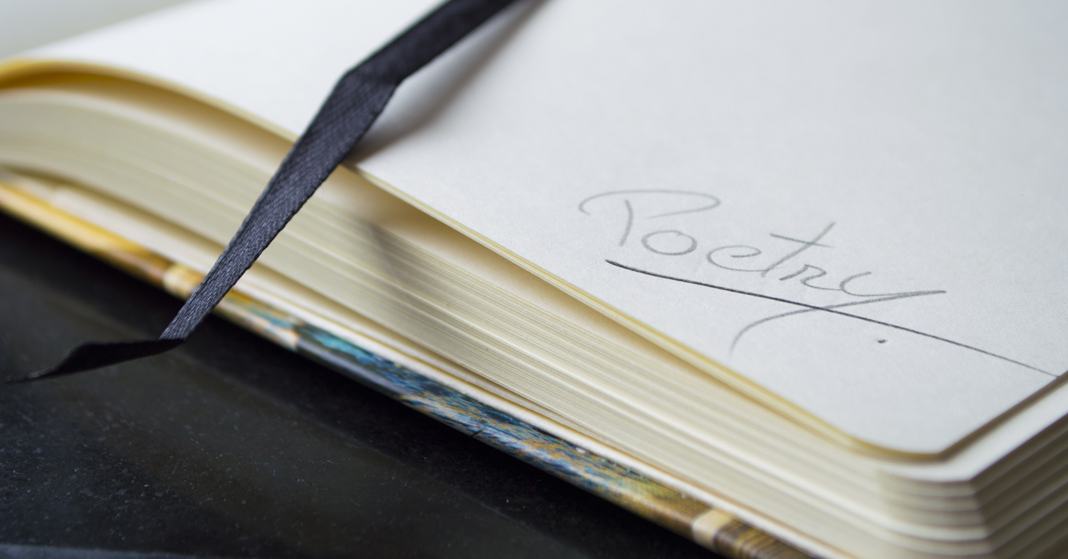
Have you ever read Ezra Pound’s “In a Station of the Metro”? This twenty-word poem seems simple on the surface. In spite of that, I never really got it until one of my teachers took the time to flesh out its significance. We talked about the sounds and rhythm of the poem itself, the culture Pound lived in, his beliefs as a poet and writer, and the event that inspired the poem. All this information together inspired in me a deep appreciation for Pound’s art and for this poem in particular.
In the course of your child’s education, you’re probably going to read many poems. Let’s take a look at some approaches for teaching poetry to help your children better understand and appreciate it.
Looking for Sounds
Poets choose words not only for their meaning but also for their sound. Words with hard consonant sounds—b, d, k, and t—can sound harsh and forceful. In contrast, words with softer consonant sounds—l, m, n, and s—are melodic and have a gentle flow. In Pound’s poem, the sounds seem to mimic the noises a steam train makes as it comes into a station. The sounds grow harder as the train brakes and slows.
Analyzing Meter or Rhythm
All poems have rhythm. Some poems have metered rhythm—a regular pattern of stressed and nonstressed syllables. You might remember iambic pentameter from your own studies. For example, Shakespeare’s “Shall I Compare Thee to a Summer’s Day” uses iambic pentameter. Other poems don’t have regular meter, but they still have rhythmic sense, especially when they are well crafted. The words Pound uses in his poem not only sound train-like but also have a rhythm that supports the feeling of a train coming to a stop.
It’s surprisingly easy to spend time analyzing the sounds of a poem. In fact, there is a whole bank of terms to draw from to talk about sounds more effectively, and BJU Press literature books explore many of those terms. Have your child look up John Updike’s “Winter Ocean,” available in Elements of Literature (2nd edition). Updike doesn’t rely solely on melodic and gentle sounds to describe his ocean. He combines hard and soft consonant sounds in lines such as “Many-maned scud-thumper” and “shrub-/ruster, sky-mocker, rave!” The winter ocean is not always gentle.
Considering historical context
Looking at something according to its context should already be familiar to your children from hearing sermons and doing Bible studies. When exploring a Scripture passage, we should take a close look at the immediate context of the verse as well as what we know about the cultural beliefs, the life of the author of that book, and the original meanings of the words themselves. The same strategies for Bible study apply to poetry. If the reader knows how subway stations looked in the early 1900s, his appreciation for Pound’s poem increases.
Learning about the poet
At times, the simplest detail about where the poet lived and what he believed can help your children understand what the poet meant. In Pound’s case, knowing that he studied haiku helps us see why he chose to condense his poem to three short lines. And if we read that he once said in a letter, “I got out of a metro train . . . and saw suddenly a beautiful face, and then another and another,” we understand better how to view the poem.
Discovering the meanings of the words
Sometimes, your children will need to learn what the words meant way-back-when. Take a look at Christina Rossetti’s poem “Symbols,” discussed in Excursions in Literature (3rd edition). The textbook points out that Rossetti lived from 1830 to 1894 in England. Many of the words she would have used regularly simply aren’t commonly used today. For example, when is the matin hour? And what does evensong mean? The Oxford English Dictionary is a great resource for learning the history of English words. By looking up these words, we can see that they both have to do with hours dedicated to prayer in the church—one in the early morning and the other in the evening. In other words, the rosebud that the speaker watches blooms and falls the same day. In Pound’s poem, it might be helpful to look up apparition. Its meaning combined with its sound and rhythm make it the perfect choice.
Poetry can inspire even a young child to look at things a little differently and to appreciate the power of language. You could probably spend hours delving into the depths of poetry. But you and your children don’t have to spend a long time on every poem. Finding even a few things in a poem that give it more meaning or beauty will make him a better reader—and maybe even a writer!